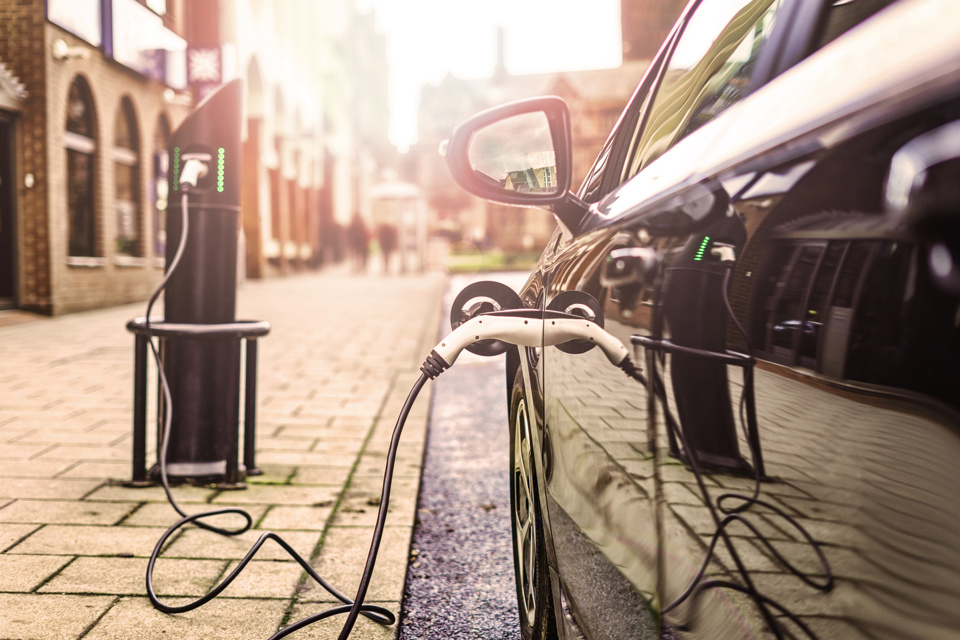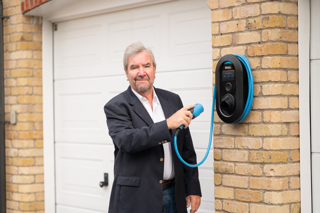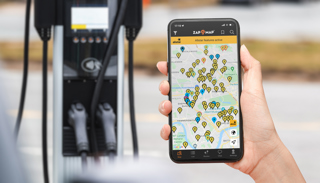This article was first published in the April edition of Fleet News.
Councils will be expected to work closely with fleets to ensure their needs for public charging infrastructure are taken into consideration, the Government says.
The Electric Vehicle Infrastructure Strategy, which was published by the Department for Transport (DfT) in March, commits £1.6 billion to the creation of 300,000 public charge points by 2030, as well as placing new legal responsibilities on charging providers covering means of payment and other factors.
It also recognises the diverse charging needs of company car and van fleet operators, and the key role local and highways authorities must play if the roll-out is to be a success.
Welcoming the focus on fleets in the new strategy, chair of Association of Fleet Professionals (AFP), Paul Hollick, said: “We need more chargers of the right type in the right locations to support the massive EV roll-out of cars and vans to which the fleet sector is committed.
“It’s an area in which we have been campaigning heavily, including conversations with the Government, and we are pleased to see that most of what we have been asking for is covered in the new announcement.
“The challenge now is to ensure that the roll-out that the strategy promises happens at the right pace, matching the development of the EV parc in terms of both numbers and location of charge points.”
HELP FOR COUNCILS
The Government acknowledges that the roll-out of public charge points across the country is “too slow” and there is “insufficient local leadership and engagement” in some places.
It says local authorities can lack the “experience and capacity” to develop strategies and apply for funding, with the resulting lack of infrastructure dissuading prospective EV owners.
This point was highlighted in a Freedom of Information request by campaign group FairCharge, which revealed that just 28% of local authorities have published EV transition strategies. A further 23% were in the process of devising a strategy. This is despite being encouraged to do so by the Government and the Local Government Association (LGA).
To combat the problem the Government has launched a £500 million local infrastructure support programme, which includes a £450m Local EV Infrastructure (LEVI) Fund to help local authorities scale-up infrastructure provision and to negotiate good commercial terms.
A pilot scheme for the LEVI fund, which was launched to coincide with the publication of the strategy, will allow local authorities to bid for a share of £10m in funding.
It will test how the Government can most effectively support local authorities procuring charge point deployment by trialling different delivery mechanisms, business models and technologies.
The Government says it recognises many local authorities face “challenges” in developing local charging infrastructure approaches, but insisted it was committed to ensuring they have the tools and resources required to identify and address their specific local issues.
The LEVI Fund includes up to £50m to fund local delivery support across the country, and provide training, tools and knowledge sharing.
It says it will also focus on upskilling areas which are behind in planning and delivering charge points and it is in the process of launching a local government knowledge hub on gov.uk, with guidance for local authorities on EVs and charging infrastructure.
Furthermore, an EV infrastructure guide for local authorities will be published in partnership with the Institution of Engineering and Technology (IET) to assist with the transition to zero emission vehicles.
DATA KEY TO ROLL-OUT
Hollick says that it’s imperative the right type of charge points are available, especially those with larger bays that can handle larger electric vans.
“This is something that is essential for fleet adoption of these vehicles,” he said. The AFP’s Kerbside Charging Group is due to report soon on its work into the creation of a national ‘heat map’ showing where driver demand for kerbside charging is required.
“We’ve drawn in data covering something like 70,000 drivers of company cars and vans who live in apartments or terraced housing, don’t have the option of installing off-road charging and need access to kerbside facilities,” explained Hollick.
“The aim of the Kerbside Charging Group is to ensure there is a safe and secure kerbside facility within a five-minute walk of their homes.
“The creation of the heat map is a significant step in this process, we believe, and we will be sharing the data with national and local government as well as charge point operators.
“Our intention is that the new information is fed into the new government strategy and used as a detailed guide to where charging provision is most urgently needed.”
The Government says it recognises that data sharing plays a vital role in the successful deployment of charging infrastructure.
To coincide with the launch of infrastructure strategy, the Geospatial Commission – a Cabinet Office expert committee that promotes the best use of data – announced a project to explore how location data can be better utilised to support planning and delivery of charge points by local authorities.
Dr Steve Unger, commissioner at the Geospatial Commission, said: “Location data will play a key role in planning the UK’s transition to electric vehicles and help make net zero a reality.
“By working together, we will be able to unlock the potential for data-driven innovation in transport.”
The Geospatial Commission project includes workshops with 10 local authorities to identify challenges and opportunities for better use of location data in the roll-out of EV charge point infrastructure.
Councillor Helen Hayden, executive member for infrastructure and climate from Leeds City Council, which is taking part in the scheme, said: “With figures showing that the number of plug-in vehicles in Leeds has doubled over the past year, it is vitally important that we understand how best to expand and improve access to charging infrastructure for drivers on the go or without private parking.”
RAPID CHARGING HUBS
A new report from the EV Energy Taskforce – Charging the Future: Drivers for Success 2035 – launched to coincide with the Government’s EV infra structure strategy, has identified key conditions that will create the ‘sweet spot’ for success, driving uptake and enabling an efficient and successful transition to electric vehicles.
By 2035, electric cars and vans are expected to account for 74% of vehicles on the road, says the taskforce.
To provide drivers with the confidence to buy EVs and the means to charge them, near-home charging provision will be a critical part of the mix.
As many as half of all public charge points will need to provide charging for drivers in homes that lack dedicated parking spaces.
The taskforce – representing a collaboration between the UK’s energy, infrastructure and transport industries – believes that local rapid-hub charging could provide a key part of this mix.
Higher energy throughput gives such installations the potential to offer better economic returns than on-street charging and, importantly, be price competitive for users, it says.
The report says capturing consumer preferences and understanding fleet requirements will be essential to providing charging solutions that are usable, accessible and investable.
Philip New, chief executive of the Energy Systems Catapult and the EV Energy Taskforce chair, says that a key challenge in making the UK’s ambition to electrify road transport deliverable is to define the “type and scale of infrastructure” that the UK will need and how that is achieved.
Read more from Andy Eastlake, chief executive of Zemo Partnership and deputy chair of the EV Energy Taskforce, on the increased focus on near-home charging.
























Login to comment
Comments
No comments have been made yet.